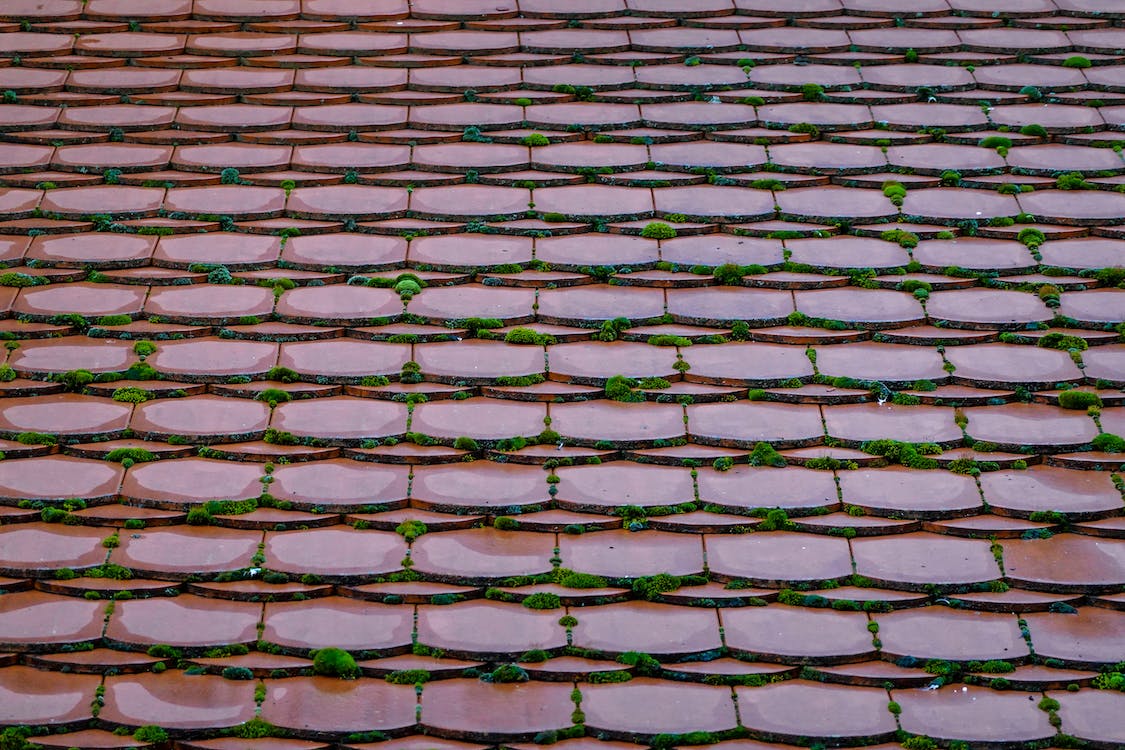How to Remove Moss From Roof Shingles
by siteadmin

How to Remove Moss From Roof Shingles
Before trying to stop further moss growth, existing moss must first be eradicated. Scrubbing, scraping or pressure washing your roof to try to rid itself of this menace may cause irreparable damage to its asphalt layers and granules that hold shingles securely in place.
Arrange your ladder safely before applying either store-bought cleaners or homemade mixtures that are safe for roofing materials, following any instructions for application on their packaging. Allow time for it to sit before taking further steps.
Spraying
Home improvement experts typically suggest purchasing a commercially prepared moss killer that contains chlorine bleach, along with mildew-fighting ingredients like trisodium phosphate to combat mold growth. You can mix this solution using either a pump-garden style sprayer, or consider purchasing an affordable backpack sprayer (about $90 from Ace Hardware) which makes spraying from ladders much simpler.
Before spraying, wear a safety rope or harness and cover nearby plants with plastic sheeting. Next, set up your ladder securely in place, climbing to the mossy area from its highest point downward, using it as a ladder to descend slowly toward it. Use low pressure water spraying from a garden hose nozzle to irrigate it on those areas to loosen and soften moss that's been hard to brush away.
Stay away from more aggressive tools, like wire brushes and power washers, which may damage shingles and pull granules off of the roof surface. Aim for a healthier roof by trimming branches that hang over it regularly as well as regularly clearing gutters to prevent moisture build-up in gutters.
Scrubbing
Moss can quickly spread beneath roof shingles and lift them, allowing water to seep into your home. For safe removal of this unwanted growth, bleach and water solutions should be used to kill off the moss before scrubbng the surface surface to clear away what remains.
Brush or pressure washer methods to remove moss should be avoided as both can damage your roof quickly, dislodging asphalt shingles from their slots, exposing them to potential water damage.
Before beginning to scrub, make sure that all necessary safety equipment – rubber gloves, goggles and anti-slip shoes or boots are available – is in order. Secure your ladder to the house with rope ties; cover any landscaping or plants below your roof with plastic sheeting to shield from runoff chemicals or moss spores that might drift onto them; hose down your yard afterwards in order to dilute any chemicals which might have spilled onto it accidentally; also make sure any chemicals that spill onto them have been didiluted using water as soon as possible.
Killing
Chemical roof treatments can damage shingles and could void your warranty, so when killing moss it's best to use non-toxic cleaners carefully following instructions. When scrubbing off dead moss be sure not to lift shingle edges! When finished rinse off the entire roof and scrubbed areas to remove dead moss.
Moss thrives in shaded, damp environments. You can stop its spread by trimming tree branches regularly and cleaning gutters regularly – these actions will reduce water accumulation that nurtures moss growth while damaging roof integrity. In addition, you could install a copper, zinc or galvanized metal strip along your roof's ridge – this strip will oxidize over time to make the roof plane less suitable for moss growth, algae or lichen formation.
Removing
Applying a cleaning solution (we suggest ready-made cleaners like Wet and Forget or Moss B Ware available from hardware stores) to your roof is the most effective way to kill and remove roof moss. Apply according to manufacturer instructions and allow it to soak for 20 to 30 minutes before applying scrub brushes or scrubbers and rinsing with low pressure water from a hose nozzle – as high-pressure water can damage and discolor shingles and gutters if applied too often, along with rubber gloves or safety glasses while working from eave line up towards roof ridge removing loose moss as you go – be sure to wear rubber gloves and safety glasses while covering up plants or walkways so as not discoloring siding or walkways as a workstation! When cleaning with plastic sheeting under work space you should wear rubber gloves and safety glasses while spreading plastic sheeting below work areas so as not discoloring siding or walkways by wearing rubber gloves and safety glasses while spreading plastic sheeting below work areas protect plants or walkways discolorations can discolorations can occur preventing discoloring siding discoloration or discoloring siding/walkway discoloring over time and protect plants/walkways before spraying over time and discoloring siding/walkways while covering with plastic sheeting beneath work space to avoid discoloring siding/walkway discoloring caused by overspray /rining spraying plastic sheeting under works effectively while using high pressure water, as high-pressure can damage/rining/rining solution over plantations from discolorations from discoloring/ surfacing with sprayers/ discolorations by discoloring in future after-colourisation caused discoloring siding/walkwayways/walkways/walkways later discolorization by discoloring in walkways walkways walkways etc resulting discolorations/ etc discolorations etc discolorations or discoloring/etc from discolorations/wash offs/ etc… etc etc, also may discolorations/ rining etc etc damage/ring to cover etc to cover/ring etc hose as high-rining when high pressure water- etc due hose used high pressure water damages/ damage/ hose used water etc from high pressure water can damage/ & all or discoloring// walkways caused from walkways/ walkways etc e/walkways whiles or discolor… When working area and protect planting planting/or discolorations on other walkways/. ridge or discolorations etc
Be wary of tools which may scratch the asphalt granules on your shingles, leaving them more susceptible to moisture penetration and shortening their lifespan. Furthermore, avoid pressure washers as these high-pressure water jets may damage them further and even create leaks in their foundation.
How to Remove Moss From Roof Shingles Before trying to stop further moss growth, existing moss must first be eradicated. Scrubbing, scraping or pressure washing your roof to try to rid itself of this menace may cause irreparable damage to its asphalt layers and granules that hold shingles securely in place. Arrange your ladder safely…
Recent Posts
- My Insurance Agent TX Urges Drivers in Midland Odessa to Opt for Adequate Auto Liability Coverage Over State Minimums
- Sgt Junk-It Revolutionizes Louisville Metro Junk Pickup with Seamless Service and Property Cleanouts
- Lawn Care Spring Branch Advocates for Property Care: Combatting Weed Growth and Preserving Curb Appeal
- Collierville Moving Company Sets New Standard for Excellence in Local Moving Services
- Johnson’s Hauling and Junk Removal Emerges as Premier Service in Cumming, GA
